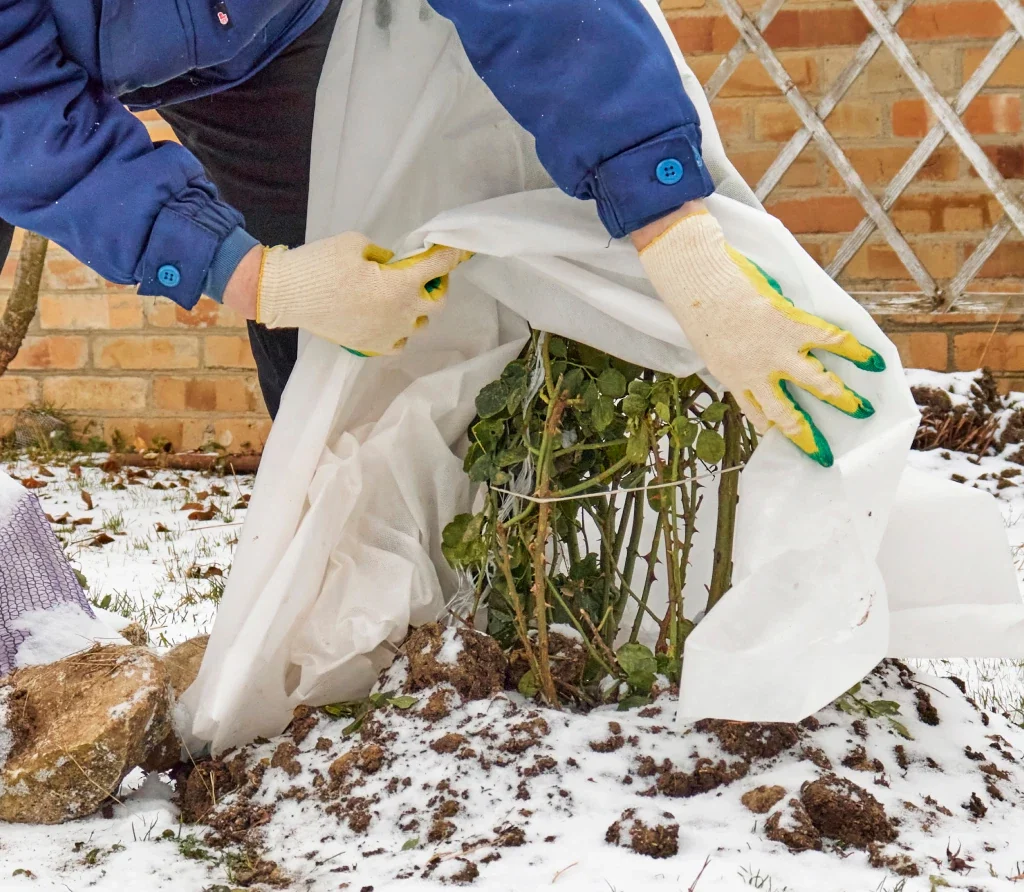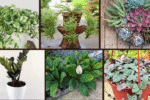For gardeners, nothing feels worse than waking up on a crisp morning to find your beloved plants damaged by a sudden frost. As beautiful as frost-covered landscapes can look, those delicate ice crystals can wreak havoc on plant cells, causing leaves to wilt, turn black, or even kill tender plants overnight. The good news is — you can protect your garden from frost damage with the simple, effective use of covers.
In this guide, we’ll explore how to protect plants from frost with covers, the best materials to use, how to properly apply them, and additional frost protection tips to keep your garden thriving through the chillier months.

Why Frost Protection Matters
When temperatures drop below 32°F (0°C), water inside plant cells can freeze. As it freezes, it expands, causing the plant cells to burst. Frost damage often appears as:
- Blackened, mushy leaves and stems
- Wilting or drooping plants
- Scorched or discolored foliage
- Death of tender annuals and young perennials
Protecting plants with covers acts as insulation, trapping warmer air around the plants and preventing freezing temperatures from settling directly on their foliage.

When to Cover Plants
Knowing when to cover your plants is crucial. Not every cold night requires protective action, but several conditions increase frost risk:
- Clear skies and calm, windless nights
- Sudden temperature drops after a warm day
- Light to moderate frost forecasts (28°F to 32°F)
Watch your local weather forecast for frost advisories, and use a garden thermometer to track temperatures near plant level — it can be a few degrees colder near the ground than reported.

Best Materials for Frost Covers
A wide range of materials can be used to cover plants during frosty nights. The best covers are those that:
- Trap heat radiating from the ground
- Allow air circulation
- Are lightweight and easy to handle
- Are water-resistant if possible
Here’s a breakdown of some of the best frost cover options:
1. Frost Blankets (Row Covers)
Specially designed for garden use, these covers are made from lightweight, breathable polypropylene or polyester. They offer insulation while allowing air, light, and moisture through.
Ideal for: Vegetable beds, flower beds, shrubs, and small trees.
2. Old Sheets and Blankets
Household linens are a quick, affordable solution. Avoid heavy fabrics that can crush delicate plants.
Ideal for: Tender flowers, annuals, and small bushes.
3. Burlap
Burlap is breathable, strong, and provides excellent insulation. It’s a great choice for shrubs and young trees.
Ideal for: Potted plants, small trees, and shrubs.
4. Plastic Covers
Plastic sheets or tarps trap heat well but must be used carefully. Never let plastic touch plant leaves directly, as it can freeze them. Always support plastic with stakes or a frame.
Ideal for: Emergency protection in cold snaps.
5. Cardboard Boxes and Buckets
A handy way to cover smaller plants. Place them over individual plants and remove them during the day.
Ideal for: Young seedlings, herbs, and compact annuals.

How to Properly Cover Plants for Frost Protection
Covering plants isn’t just about throwing a sheet over them. To truly protect them, follow these proper techniques:
Step 1: Cover Before Sunset
Cover plants in the late afternoon before temperatures drop. Heat from the soil will rise in the evening, and the cover will help trap this warmth around the plants.
Step 2: Drape Covers Loosely
Covers should extend to the ground, creating a tent-like shape around the plant. This traps warmer air inside and prevents frost from settling directly on the plant.
Step 3: Secure Covers Against Wind
Use rocks, bricks, or garden staples to anchor covers to the ground and prevent them from blowing away.
Step 4: Avoid Direct Plant Contact with Plastic
If using plastic, always use a support structure like stakes, hoops, or tomato cages to prevent the plastic from touching the foliage.
Step 5: Remove Covers in the Morning
As temperatures rise with the morning sun, remove covers promptly to avoid overheating and allow plants to absorb light and air.
Special Frost Protection Techniques for Different Plants
Different plants have different frost tolerances and might need customized protection methods.
Tender Annuals
Cover tender annuals like petunias, impatiens, and marigolds with lightweight cloth or frost blankets. Water soil in the afternoon before a frost — moist soil holds heat better.
Vegetable Beds
Use row covers or cloches (upside-down jars or bottles) to cover young vegetables like tomatoes, peppers, and cucumbers. Lift covers during the day when temperatures rise.
Potted Plants
Move potted plants under shelter (a porch, garage, or shed) or group them together and cover them with a frost blanket. Keep pots off cold ground using wooden pallets or pot feet.
Small Trees and Shrubs
Wrap burlap or frost cloth around shrubs or small trees, securing it loosely with twine. For young trees, cover the trunk base with straw or mulch for added insulation.
Bonus Frost Protection Tips
Alongside covers, these additional strategies can help shield your plants from frost:
- Water Plants Before a Frost: Damp soil retains heat better than dry soil, warming the air around plant roots.
- Use Mulch: A 2–4 inch layer of straw, bark, or leaves helps insulate the soil and protect roots.
- Install Windbreaks: Temporary barriers like fences or hedges reduce wind chill around sensitive plants.
- Create Mini Greenhouses: Use clear plastic containers or build hoop houses over garden beds for season-long protection.
- Harvest Ripe Produce Early: Pick vulnerable fruits and vegetables before frost hits to avoid crop loss.
Signs of Frost Damage and Recovery Tips
Even with careful preparation, frost damage can happen. Common signs include:
- Blackened, wilted leaves
- Soft, mushy stems
- Drooping plants
Recovery Tips:
- Don’t prune damaged foliage immediately — it can protect the rest of the plant from further damage.
- Wait until warmer weather returns before removing dead parts.
- Apply a balanced liquid fertilizer to support plant recovery.
- Monitor for signs of rot or disease in severely affected plants.
Conclusion
Protecting your plants from frost doesn’t have to be complicated. With the right covers and techniques, you can shield your garden from icy temperatures and enjoy healthy, thriving plants well into spring and fall. Remember to act before the cold settles in, choose appropriate materials, and remove covers as soon as conditions improve.
By following these practical tips on how to protect plants from frost with covers, you’ll ensure that your flowers, vegetables, and ornamentals remain safe, beautiful, and bountiful — no matter how unpredictable the weather turns.





Leave A Comment